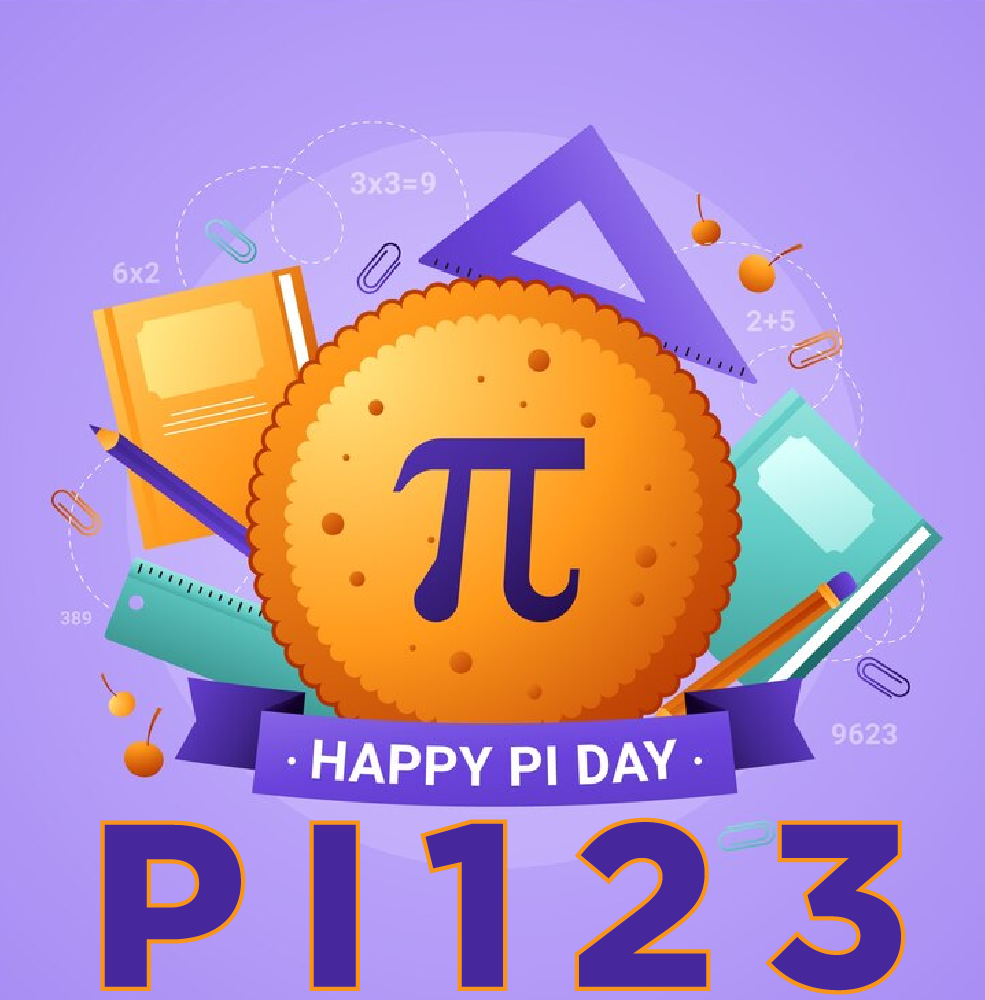Table of Contents
Introduction
Pi (π) is a mathematical constant that has fascinated mathematicians, scientists, and enthusiasts for centuries. It represents the ratio of a circle’s circumference to its diameter and is an irrational number with an infinite number of non-repeating decimals. The study and application of Pi extend far beyond basic geometry, influencing fields as diverse as engineering, physics, and computer science. This article delves into the history, properties, and modern applications of Pi, showcasing its importance and the continued quest to understand it more deeply.
The Historical Journey of Pi
Ancient Civilizations and Pi
The concept of Pi dates back to ancient civilizations, with early approximations found in Babylonian and Egyptian mathematics. The Babylonians used a value of 3.125, while the Egyptians approximated Pi as 25681≈3.1605\frac{256}{81} \approx 3.160581256≈3.1605. These early efforts laid the groundwork for future mathematicians to refine and understand Pi better.
Archimedes and the Geometric Approach
One of the most significant contributions to the study of Pi came from the Greek mathematician Archimedes. He used a geometric approach, inscribing and circumscribing polygons around a circle to approximate Pi. Archimedes’ method provided an approximation of Pi between 22371\frac{223}{71}71223 and 227\frac{22}{7}722, demonstrating remarkable accuracy for his time.
The Advent of Calculus and Pi
The development of calculus in the 17th century by Isaac Newton and Gottfried Wilhelm Leibniz marked a significant advancement in the study of Pi. Calculus allowed mathematicians to develop series that converged to Pi, enabling more precise calculations. The Gregory-Leibniz series and the Nilakantha series are notable examples that emerged during this period.
Properties of Pi

Irrational and Transcendental Nature
Pi is an irrational number, meaning it cannot be expressed as a simple fraction. Its decimal representation is infinite and non-repeating. Furthermore, Pi is a transcendental number, which means it is not a root of any non-zero polynomial equation with rational coefficients. This property, proven by Ferdinand von Lindemann in 1882, established that it is impossible to square the circle—a problem that had puzzled mathematicians for centuries.
Pi in Geometry and Trigonometry
In geometry, Pi is fundamental in the formulas for the circumference and area of a circle (C=2πrC = 2\pi rC=2πr and A=πr2A = \pi r^2A=πr2, respectively). In trigonometry, Pi is essential in defining the sine, cosine, and tangent functions, which are crucial for understanding waves, oscillations, and circular motion.
Calculating Pi

Historical Methods
Archimedean Approach
As mentioned earlier, Archimedes’ method of inscribing and circumscribing polygons around a circle was an early and influential technique for approximating Pi. This geometric approach laid the foundation for future methods.
Infinite Series
The development of calculus introduced infinite series for calculating Pi. The Gregory-Leibniz series, given by π=4(1−13+15−17+⋯ )\pi = 4 \left( 1 – \frac{1}{3} + \frac{1}{5} – \frac{1}{7} + \cdots \right)π=4(1−31+51−71+⋯), converges to Pi but does so very slowly. The Nilakantha series, π=3+(4/(2⋅3⋅4))−(4/(4⋅5⋅6))+(4/(6⋅7⋅8))−⋯\pi = 3 + \left( 4 / (2 \cdot 3 \cdot 4) \right) – \left( 4 / (4 \cdot 5 \cdot 6) \right) + \left( 4 / (6 \cdot 7 \cdot 8) \right) – \cdotsπ=3+(4/(2⋅3⋅4))−(4/(4⋅5⋅6))+(4/(6⋅7⋅8))−⋯, converges more rapidly.
Modern Computational Techniques
Algorithms and Supercomputers
In the modern era, algorithms and supercomputers have pushed the boundaries of Pi calculation. The Gauss-Legendre algorithm and the Chudnovsky algorithm are among the most efficient methods for computing Pi to billions of decimal places. These algorithms leverage iterative processes and complex mathematical principles to achieve unprecedented precision.
Distributed Computing
Projects like PiHex and other distributed computing initiatives have harnessed the power of thousands of computers worldwide to calculate Pi to trillions of digits. These collaborative efforts highlight the intersection of mathematics and technology, pushing the limits of computational capabilities.
Applications of Pi

Engineering and Physics
Structural Engineering
Pi plays a critical role in structural engineering, particularly in the design of circular and cylindrical structures. Engineers use Pi to calculate stress, strain, and load distribution in components like pipes, tunnels, and pressure vessels.
Electromagnetism and Wave Theory
In physics, Pi is integral to the study of electromagnetism and wave theory. The relationship between Pi and trigonometric functions underpins the analysis of wave behavior, resonance, and signal processing.
Computer Science and Cryptography

Monte Carlo Simulations
Monte Carlo simulations, used extensively in computer science, rely on Pi for probabilistic modeling and numerical analysis. These simulations involve random sampling to solve problems that might be deterministic in principle, and Pi’s properties are crucial for accurate results.
Cryptographic Algorithms
Pi’s infinite and non-repeating nature makes it useful in cryptographic algorithms. Its digits can be used to generate pseudo-random numbers, enhancing the security of encryption systems and ensuring robust data protection.
Medicine and Biology
Medical Imaging
In medical imaging, Pi is used in the algorithms that reconstruct images from CT scans and MRI data. These techniques rely on Fourier transforms, which are rooted in Pi and trigonometric functions, to produce accurate and detailed images of the human body.
Population Genetics
Pi also appears in the field of population genetics, where it helps model the distribution and variation of genes within populations. Understanding genetic drift, mutation rates, and evolutionary dynamics often involves calculations that include Pi.
The Cultural Impact of Pi

Pi Day Celebrations
March 14 (3/14) is celebrated worldwide as Pi Day, a nod to the first three digits of Pi. Pi Day festivities include mathematical competitions, educational events, and even eating pie. This day fosters an appreciation for mathematics and encourages learning and exploration among students and enthusiasts.
Pi in Literature and Art
Pi has inspired numerous works of literature and art. From the novel “Life of Pi” by Yann Martel to visual artworks depicting the digits of Pi, this mathematical constant has transcended its numerical origins to become a cultural icon. Artists and writers often use Pi to explore themes of infinity, complexity, and the mysteries of the universe.
The Future of Pi Research
Unresolved Questions
Despite centuries of study, Pi still holds many mysteries. Mathematicians continue to investigate questions about the distribution of its digits and the potential for new algorithms that can calculate Pi even more efficiently. The quest to understand Pi is far from over, promising new discoveries and insights in the years to come.
Technological Advancements
As technology advances, so does our ability to explore and utilize Pi. Quantum computing, artificial intelligence, and other cutting-edge fields may offer new ways to calculate and apply Pi, pushing the boundaries of what is possible in mathematics and beyond.
Conclusion
Pi is much more than a number; it is a cornerstone of mathematics and a bridge to numerous scientific disciplines. Its rich history, unique properties, and wide-ranging applications make it a subject of endless fascination and study. As we continue to explore the depths of Pi, we not only uncover more about this mathematical marvel but also gain a deeper understanding of the world around us. Whether in engineering, physics, computer science, or culture, Pi remains an enduring symbol of the beauty and complexity of mathematics.
FAQs: Pi123
1. What is Pi123?
Pi123 is an innovative numerical tool designed to simplify complex calculations and enhance mathematical accuracy. It is widely used in scientific, engineering, and educational fields.
2. How does Pi123 work?
Pi123 operates by utilizing advanced algorithms to perform precise calculations. It allows users to input various mathematical expressions and provides accurate results almost instantaneously.
3. Who can benefit from using Pi123?
Pi123 is beneficial for students, educators, engineers, scientists, and anyone involved in fields that require precise mathematical calculations. It helps streamline the computation process, saving time and reducing errors.
4. Is Pi123 available for free?
The availability of Pi123 depends on the platform offering it. Some versions or basic functionalities may be available for free, while advanced features might require a subscription or one-time purchase.
5. Can Pi123 be used on mobile devices?
Yes, Pi123 is designed to be compatible with various devices, including smartphones, tablets, and computers. There are mobile apps and online platforms that offer Pi123 for easy access on the go.
6. What are the main features of Pi123?
Pi123 includes features such as high-precision calculations, support for various mathematical functions, user-friendly interface, graphing capabilities, and the ability to handle large datasets.
7. How accurate is Pi123 in performing calculations? Pi123 is known for its high level of accuracy, making it a reliable tool for both simple and complex mathematical computations. Its algorithms are designed to minimize errors and provide precise results.
8. Can Pi123 be integrated with other software?
Yes, Pi123 can often be integrated with other software applications, especially those used in engineering and scientific research. This integration allows for seamless data transfer and enhanced functionality.
9. Are there any tutorials or guides available for Pi123?
Many platforms offering Pi123 provide tutorials, user guides, and support documentation to help users get the most out of the tool. These resources are typically available on the official website or within the application.
10. Is technical support available for Pi123 users?
Most providers of Pi123 offer technical support to assist users with any issues they may encounter. Support can usually be accessed through customer service channels, including email, phone, or live chat.






